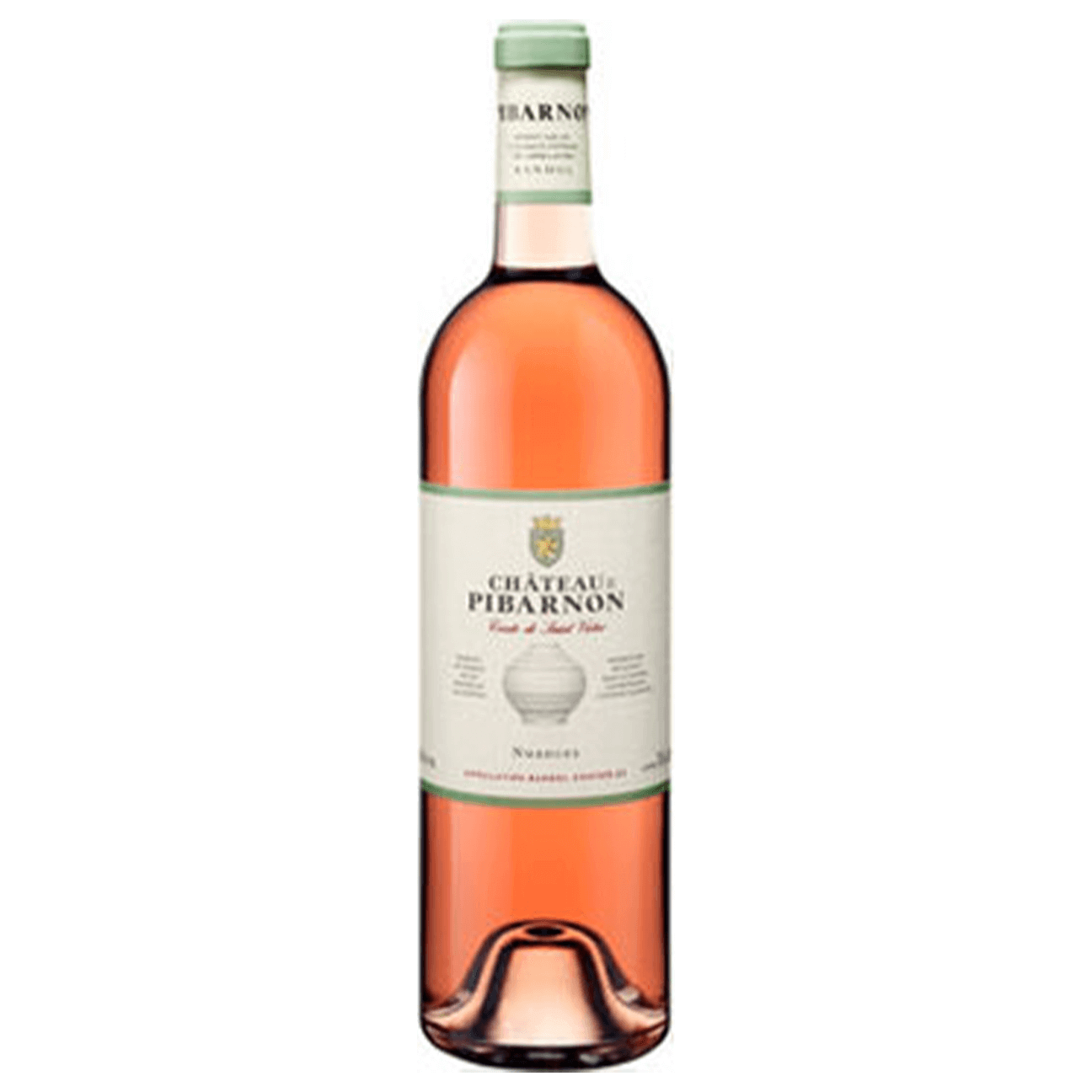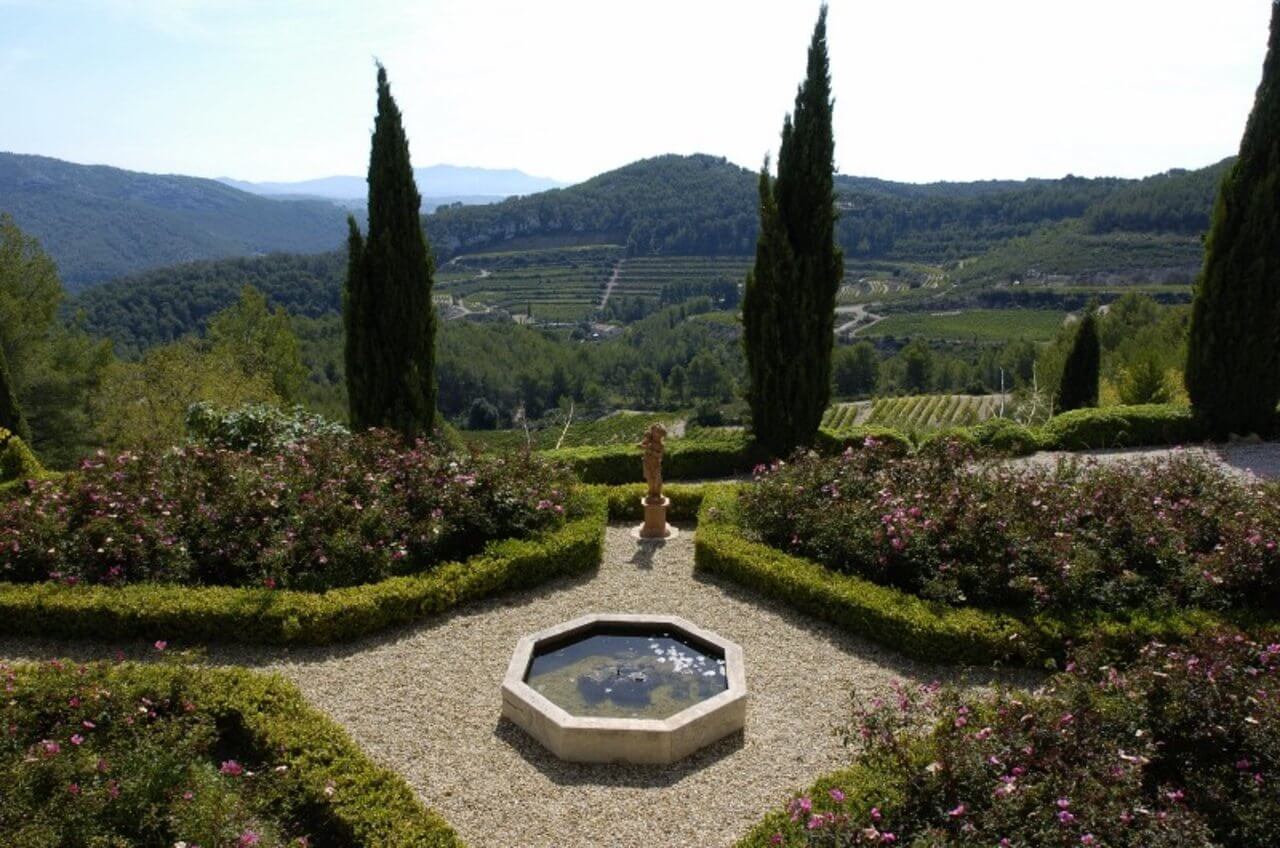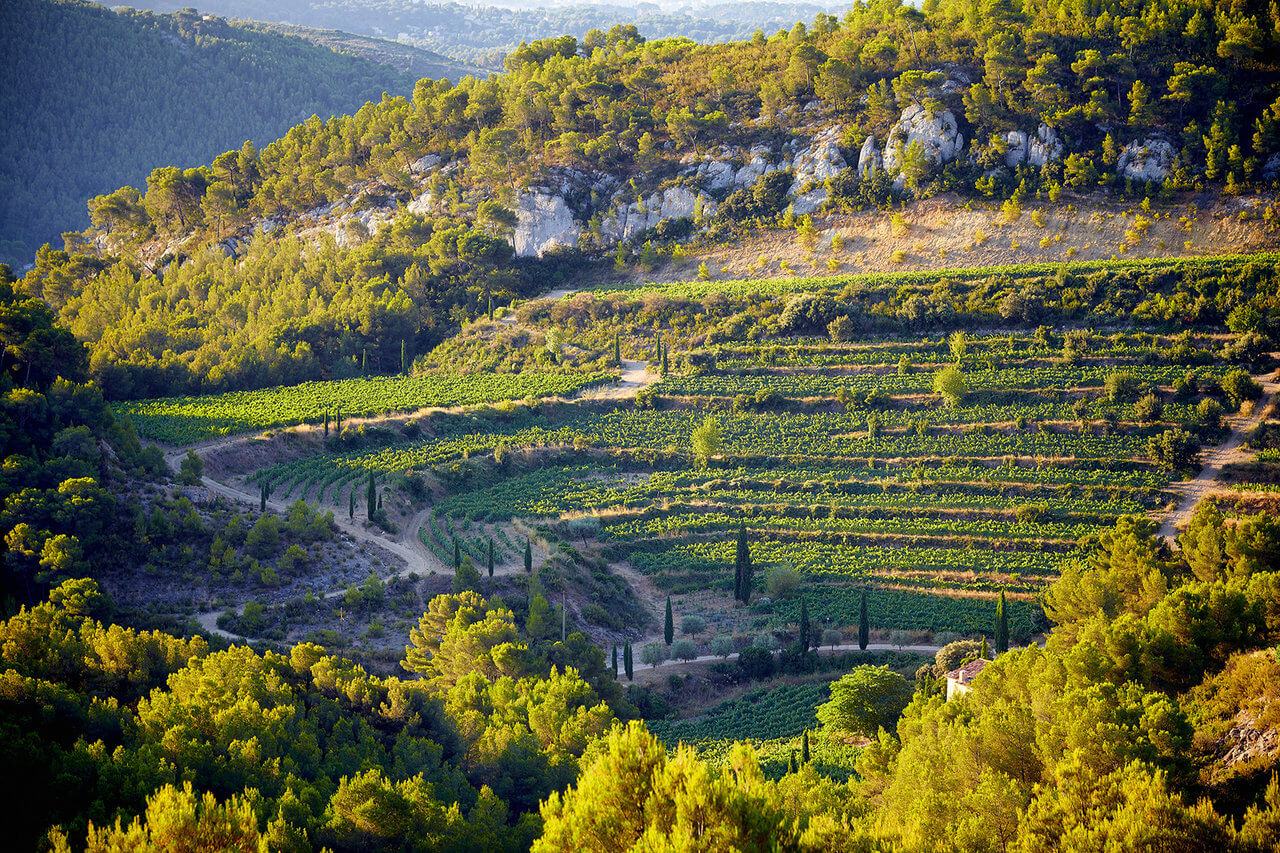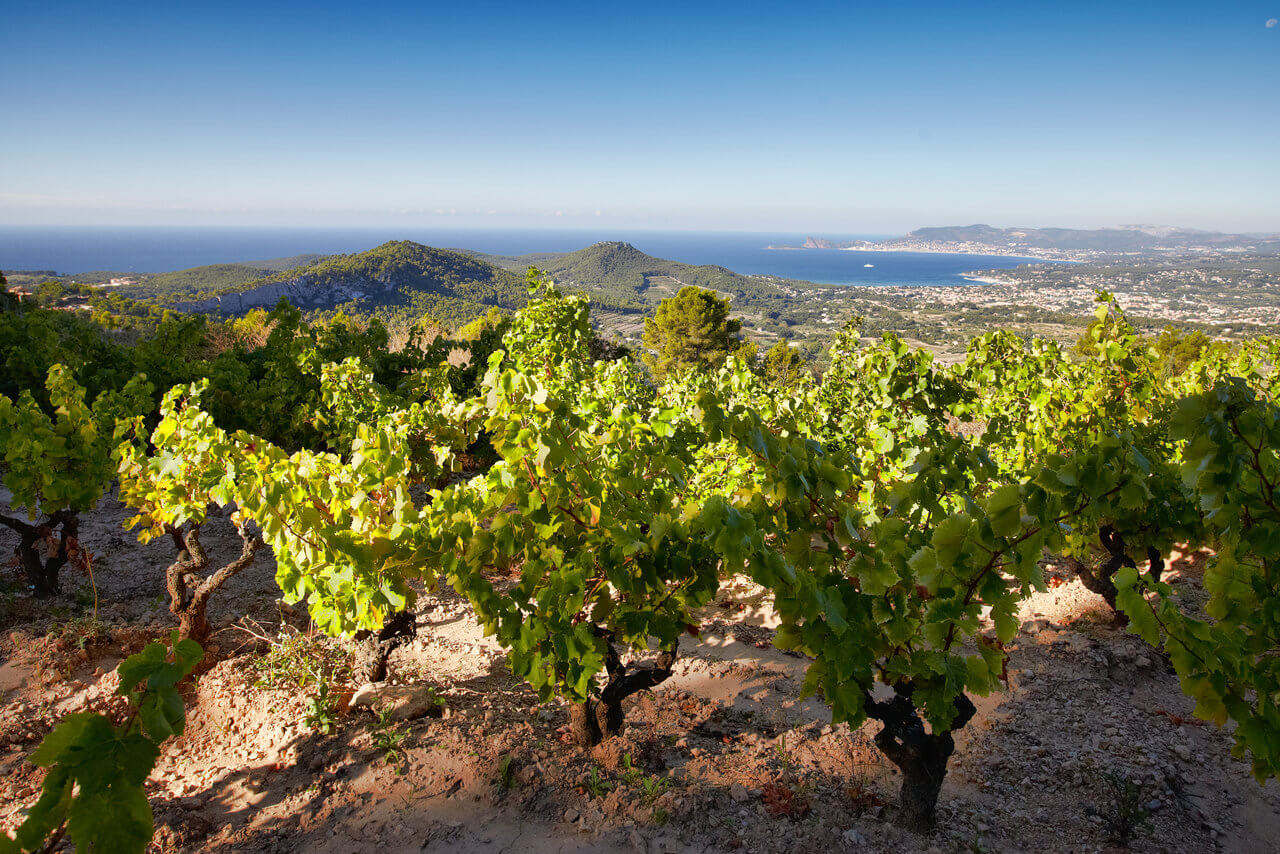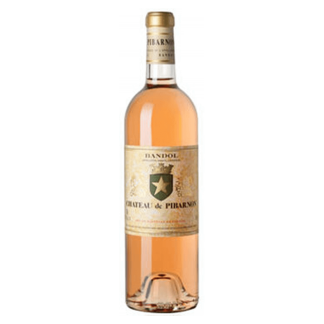Description
About Chateau de Pibarnon
Overlooking the Mediterranean and grown on undulating hills where olive trees, cypresses, figs, pink laurels, pines and oaks grow, the Pibarnon vineyard truly dazzles the eyes – a bit of paradise in Provence, situated on the highest slopes of the soil of Bandol. The wonderment begins as you start up the small, winding road from the village of Cadière d’Azur to Château de Pibarnon. The road climbs up through the vines and pine trees of Alep, offering unforgettable glimpses of Ciotat bay and Bec de l’Aigle.
Then, round a sharp bend, the Pibarnon estate reveals all its charm. On the hill where the optical telegraph linking Toulon to Paris used to be, stands the Pibarnon farmhouse, a perfect replica of an 18th century Provençal farmhouse. Above the farmhouse are serried ranks of vines up to a height of 300 metres and a series of corries facing the peaks of Le Castellet to the north and the resolutely blue sea to the south. From the cellar’s terrace, the view is worthy of the Theatre of Epidaurus. Remodelled by hefty bulldozers, the semi-circular vineyard looks like a mighty Greek amphitheatre overlooking Cap Sicié and the Mediterranean. The vines, planted on restanques, centuries-old terraces hand-built by generations of “wall-builders”, resemble hanging gardens suspended on those steep slopes.
You might come upon Pibarnon by chance but you will always return to experience once again the emotion induced by the majesty of an incomparable site.
Local Soil
The secret of Pibarnon’s wines lies in the complex alchemy of its local soil: a unique Triassic limestone soil born of a particular geological characteristic which perfectly regulates the flow of water to the vineyard, a brilliant grape variety, Mourvèdre, and an altitude of more than 300 metres above sea level, matched by an ideal micro-climate. Great wines are always born on great soils.
Unusual geology
Brilliantly set out in a natural amphitheatre, the local soil of Pibarnon is a unique geological phenomenon. Its soils are very different from those of the rest of the area covered by the Bandol appellation. Formed in the Quaternary era while the Alpine folds were forming, the anachronic Triassic soil is in fact 150 million years older than the other local formations. Without that upheaval, Pibarnon hill would have been 500 metres beneath the sea. The special geological characteristic of a highly calcareous soil, rich in microfossils, explains the aromatic delicacy and elegance of Pibarnon’s wines and, on its own, would justify the estate’s classification as a “clos” or a “climate”.
Another major characteristic of the local Pibarnon soil is the presence in the subsoil of Santonian blue clays, rich in essential oils, which are also found in estates as important as Château Yquem in Sauternes or Château Pétrus in Pomerol, and are always the source of great wines of rare elegance and subtle aromas.
A micro-climate
The land at Pibarnon is extraordinarily well regulated as regards temperature and never suffers from drought, even in years with the worst August days such as 1989 and 2003. This is due to phenomena found only on the great estates. Starting with its altitude, one of the highest in the area included in the Bandol appellation, 300 metres above sea level, the Pibarnon estate enjoys cool nights in summer which encourages gradual ripening of the grape, alternating with fine, sunny days. The proximity of the sea cools the grapes, preventing them from retaining heat. At that altitude, the vineyard is also protected from the morning fogs of the lower part of the valley. The grapes can thus be allowed to ripen without the risk of rot. The vines planted on restanques face south-east. Combined with the altitude, that is the best exposure for encouraging slow ripening of the grapes and gives the wines of Pibarnon their full aromatic complexity.
Water, the source of life
The other brilliant aspect of Pibarnon’s local soil is its amazing ability to retain water, preventing the vine from suffering drought. Water-related stress on the vine, combined with a shortage of water and warmth, is in fact the worst enemy of grapes because it prevents them from ripening. At Pibarnon, the restanques, like giant staircases, shape the steep slopes of the hill and prevent erosion of the vineyard during heavy winter rain, while absorbing that water into its chalky soil. Acting like real sponges, the highly active chalky soils of the Pibarnon Triassic era thus gradually irrigate the vineyard throughout the hot, dry summer months.
The king of grape varieties, Mourvèdre
A spirited variety whose grapes are very thick-skinned, Mourvèdre found its favourite soil at Bandol. Three thousand hours of sunshine a year perfectly suit this slow-ripening grape variety whose haughty shoots point proudly skywards. Rarely seen in other French vineyards where it usually ripens very poorly, it brings harmony, elegance and an amazing ageing capacity to the red wines of Bandol. Mourvèdre has to spend 18 months in oak casks as an essential prerequisite to enable it to soften its impetuous, tannic temperament. It then takes another five or six years before it fully reveals its elegant constitution, its slightly woody nose and noble character with aromas of black fruit, peonies, spices and truffles.
A very late-ripening, tannic grape variety with a difficult nature, Mourvèdre is said to need “its feet in the water and its head in the sun” to reach full maturity. The local soil of Pibarnon offers this cherished child of the house ideal conditions for its slow and complete ripening process. By restoring in summer the water accumulated during the winter rains, the active limestones of Pibarnon’s local soil enable it to keep its feet in the water while the vineyard planted at 300 metres above sea level always leaves its head in the sun. As the wine writer Pierre Casamayor wrote, evidence of this is “At Pibarnon, the Mourvèdre grape, that Latin macho, dresses in silk and cultivates hand-kissing. It shows its genius by delivering a real conversation here, intelligent and cultured, from a unique soil”.
The art of working with vines …
At Pibarnon, they know that great wines are made first in the vine. The vines are trained into a straw cup with four bunches per plant. A wire enables the leaves to climb up and ventilate the bunches, to protect them from disease and encourage ripening. The vine is cultivated naturally by hand, without weed killers or chemicals, by a team of five people dedicated to vineyard work. The production rate is still small, between 31 hl/ha and 38 hl/ha, depending on the year, as for all great wines.
That means practising a “green harvest” in early summer, removing future bunches before they ripen, and promotes proper ripening and adequate sugar concentration in the four bunches that remain on the plant. The soils are alive because they are fed with manure to encourage animal bacteria. It goes without saying that harvesting is done by hand on the hillsides every year by the same team of vineyard workers who sort and select the best bunches on foot, thus ensuring a healthy harvest.


